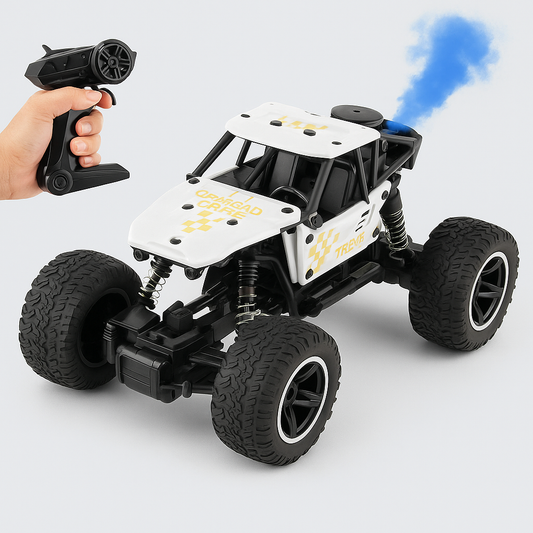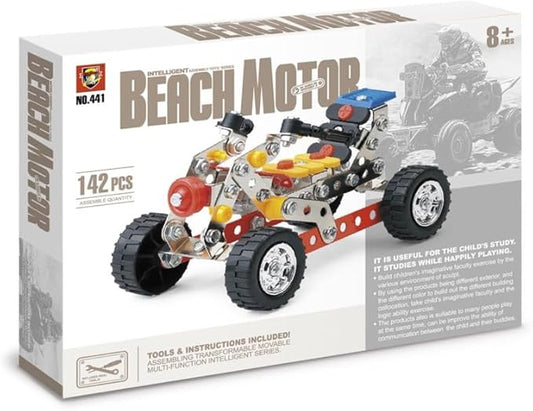How Do Educational Toys Help Child Development
Ever wondered how do educational toys help child development? Watching a child focus on a puzzle or stack blocks isn’t just adorable it’s a window into their growing mind. These toys teach kids essential skills while keeping them engaged, blending fun and learning in ways that foster meaningful growth.
Understanding what is educational toys begins with seeing how they shape young minds. They’re designed to spark curiosity, improve problem-solving, and develop motor skills. These aren’t just playthings; they’re tools for cognitive and emotional development. It’s no surprise why toys are important in every child’s life they turn playtime into a foundation for learning.

At Ramakra, we value toys that inspire and educate. Let’s explore the uses of toy, the benefits of educational toys, and even the disadvantages of educational toys to see how they shape young minds!
What Are Educational Toys?
They are more than just playthings they’re tools that foster learning and development. Unlike ordinary toys, they build skills like problem-solving and motor abilities. From puzzles to science kits, these toys highlight why toys are important for a child’s growth and creativity.
Understanding how do educational toys help child development starts with their purposeful design. Tailored to encourage curiosity, they make learning hands-on and engaging. While the benefits of educational toys include enhanced cognitive and social skills, potential disadvantages of educational toys could be overstimulation or cost if not chosen carefully.
Why Toys Are Important for Children
Why toys are important goes beyond just keeping kids busy they’re the building blocks of development. Think of a toddler stacking blocks, learning balance and patience, or a child painting, channeling their emotions into art. Toys like bead mazes sharpen hand-eye coordination, while board games teach sharing and teamwork during family nights.
To understand how do educational toys help child development, imagine a child using a puzzle to improve problem-solving or playing with a pretend kitchen to practice communication. These are the benefits of educational toys in action. However, some disadvantages of educational toys, like flashy electronic toys, may distract rather than engage, making thoughtful choices essential.
How Do Educational Toys Help Child Development?
Educational toys benefit children by shaping multiple areas of their growth. Here’s a closer look:
-
Cognitive Skills
Educational toys like puzzles enhance problem-solving and logical thinking. For example, arranging shapes in the correct slots develops persistence and spatial awareness. -
Motor Development
Toys such as stacking blocks or crayons improve fine and gross motor skills. These activities prepare kids for tasks like writing and improve hand-eye coordination. -
Language Growth
Storybooks or alphabet puzzles introduce new words and boost vocabulary. Children learn to express themselves confidently while building communication skills. -
Social Interaction
Board games and team activities teach sharing, turn-taking, and collaboration. These uses of toy create opportunities for kids to thrive in group settings. -
Emotional Regulation
Playing with dolls or stuffed animals helps kids role-play and process feelings. This promotes empathy and emotional understanding.
Benefits of Educational Toys
Educational toys help children learn while having fun. For instance, a puzzle can teach problem-solving and improve hand-eye coordination, while building blocks promote creativity and spatial awareness. This is why toys are important: they turn learning into an enjoyable experience. Through these toys, kids can grow in many ways, like enhancing their cognitive skills or emotional intelligence.
These toys also build confidence. A child completing a math-based toy feels proud of their success, and self-directed toys, like shape sorters, teach independence. While there are disadvantages of educational toys, their benefits of educational toys far outweigh the cons, providing valuable tools for development.
Uses of Toys in Child Development

Toys often act as stepping stones for critical milestones. At home, stacking blocks can teach problem-solving while developing motor coordination. In classrooms, matching games or alphabet puzzles turn abstract concepts into hands-on learning. These are simple yet effective uses of toy in everyday growth.
For therapy, tools like sensory balls help with focus or emotional regulation. Group games, like charades, foster collaboration and patience in social settings. These relatable moments highlight why toys are important and how do educational toys help child development, even when balancing potential disadvantages of educational toys like overuse.
Disadvantages of Educational Toys
While educational toys have numerous benefits, there are some drawbacks to consider:
- Expense: Many high-quality educational toys come with hefty price tags, putting them out of reach for families on tight budgets. For instance, a coding robot for kids can cost as much as a week’s worth of groceries.
- Overload: Toys with excessive features like flashing lights and sounds can overstimulate kids. A toddler handed a noisy, multi-functional gadget may find it hard to focus, making the uses of toy less effective.
- Overreliance: Relying too heavily on why toys are important for learning might stifle creativity. A child who depends on pre-made kits may struggle to explore open-ended activities like drawing or storytelling.
- Missed Opportunities: When toys replace parent-child interaction, families may miss valuable bonding moments. Instead of using a puzzle together, a caregiver might leave the child alone, missing the shared learning experience that highlights how do educational toys help child development.
Frequently Asking Questions (FAQs)
What defines a toy as educational?
Educational toys are designed to develop specific abilities like motor coordination, problem-solving, or creative thinking, all while ensuring playtime remains engaging. For example, building blocks teach spatial reasoning and construction skills in a fun, hands-on way.
Can these toys fully replace traditional teaching methods?
No. While they enhance learning, educational toys cannot substitute formal education or hands-on support from parents or teachers. A puzzle can teach patterns, but only structured guidance deepens understanding.
Are there any downsides to using educational toys?
Yes. The disadvantages of educational toys include their high cost, overstimulating designs, and the risk of over-reliance. A toy with excessive features might overwhelm children, while overuse can limit exploration of non-toy-based activities.
Conclusion
Educational toys are essential in supporting how do educational toys help child development. A puzzle can improve problem-solving, while interactive storybooks enhance early language skills. These tangible examples highlight why toys are important, offering growth opportunities beyond simple play.
Despite some disadvantages of educational toys like cost or overstimulation, their advantages shine. From boosting coordination with blocks to teaching teamwork through group games, the uses of toys significantly support child development.






Leave a comment
Please note, comments need to be approved before they are published.